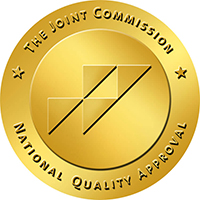Post Traumatic Stress Disorder

About Post Traumatic Stress Disorder
Post Traumatic Stress Disorder, or PTSD, can develop when a person experiences a sudden, dangerous or traumatizing event. While it is normal for a person to feel scared after a life-threatening incident and most people are able to recover shortly after, those diagnosed with PTSD continue to feel threatened even when the danger goes away. Feelings of stress, anxiety and fear continue to haunt them even in completely safe circumstances.
Research conducted over recent years has shown that there may be a difference in the way trauma affects men and women. The area in the brain associated with emotions and action seemed to be more affected by traumatic events in women than men. It’s important to note that these differences may affect the way symptoms vary across gender and why treatment will be individualized.
Symptoms of Post Traumatic Stress Disorder:
Symptoms of PTSD can include:
- Flashbacks to the traumatizing event accompanied by physical symptoms (sweating, increased heart rate, high cortisol levels)
- Recurring bad dreams about the traumatizing incident
- Avoidance of people, places or things that remind them of the incident
- Feelings of high anxiety, being tense or easily startled
- Sudden verbal outbursts
- Trouble sleeping due to other symptoms
- Negative thoughts, blame and guilt
- Lack of interest in activities once found to be enjoyable
- Distrust of the world
- Inability or fear of speaking
Why There Is Hope for PTSD
People who have suffered life-threatening danger or sudden loss are at risk for developing PTSD, and it can keep them from living a peaceful life. However, there are several effective methods to understand the disorder, unpack the trauma and cultivate healthy coping strategies to keep symptoms to a minimum. With the help of mental health specialists and the support of those around them, those living with PTSD can make peace with their past.
Helping a Loved One with PTSD – Early Intervention for Trauma
Family members are encouraged to look out for the symptoms and reach out if they feel the person is suffering from the disorder. If there has been a sudden loss or traumatizing accident in the family, it’s important to keep an eye on your loved ones and be a source of support for those who need it. People that feel like they don’t have support or don’t feel comfortable seeking it out during difficult times are often the ones to develop PTSD after a tragedy. It’s important to contact a primary care physician, a loved one or call Solstice Pacific at 949.200.7929 if you feel lost in this symptomatic cycle. If you or someone you know has been living with PTSD or extended trauma-related fear, you cannot pretend it away, drink it away or shop it away. No action repeated will heal PTSD. The path is not liner. It looks like comprehensive healthcare and learning to be patient with a process no one dreams to travel. But for everyone who does, lives a full life. The kind we are prone to imagine vanished when traumatic events changed us physically, socially and emotionally. Asking for help is the first step towards freedom.
How We Treat PTSD
PTSD requires special care, which is why it’s important to find a mental health professional that specializes in PTSD treatment specifically. Talking with a mental health professional, also called Talk Therapy, can help you identify triggers and learn ways to take control of the emotional and physical responses they bring on. Talk therapy also focuses on educating people about the disorder and talking through strategies to manage symptoms.
Exposure therapy helps by gently exposing people to their fear, in a safe and gradual way through writing and visualization, so they can learn to react in healthy ways and ultimately gain control over it. Some people suffering from PTSD may remember the traumatic incident incorrectly and even feel at fault for the incident happening, piling feelings of blame and guilt on top of the stress. Cognitive restructuring therapy can be helpful in that it “makes sense” of the incident by breaking down what actually happened and helping the person understand that they are not at fault nor do they deserve to live with post-trauma anxiety.
Connecting with others who have been diagnosed can make individuals living with PTSD feel less alone in their experiences. Joining a support group after living through a traumatic event is encouraged for every person, especially those who suffer from PTSD. If you need more, call us.
Our commitment to mental health support is demonstrated by our facilities being accessible in multiple locations—
- Mission Viejo, California
- San Clemente, California
- Fresno, California
- Irving, Texas
What Ongoing PTSD Care Looks Like
Support from friends and family is a crucial element of recovery from many mental health disorders, but especially for PTSD. Being surrounded by situations, places and people that make the individual feel comfortable is important as is learning how to cope and react positively even when bad things come up. It takes time to overcome PTSD, and every person recovers at their own pace. With patience and dedication to an ongoing treatment plan, it’s possible to find peace after PTSD.

We specialize in serving members of the armed forces. Our founders come from long lineages of military service and as of September 2020, the Solstice Pacific leadership team has a loved one deployed to the Middle East. Active or retired, we are here for Tricare members.
Symptoms of Post Traumatic Stress Disorder:
Symptoms of PTSD can include:
- Flashbacks to the traumatizing event accompanied by physical symptoms (sweating, increased heart rate, high cortisol levels)
- Recurring bad dreams about the traumatizing incident
- Avoidance of people, places or things that remind them of the incident
- Feelings of high anxiety, being tense or easily startled
- Sudden verbal outbursts
- Trouble sleeping due to other symptoms
- Negative thoughts, blame and guilt
- Lack of interest in activities once found to be enjoyable
- Distrust of the world
- Inability or fear of speaking




